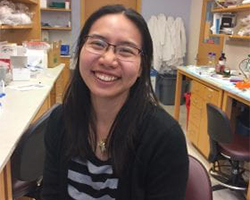Connecting new data with the old
Jon Silva’s lab takes a closer look at voltage-gated cardiac sodium channels

Voltage-gated cardiac sodium channels conduct sodium into cells and are important for proper nerve conduction, contraction of muscles and many other processes in the body. Researchers in the lab of Jonathan Silva, associate professor of biomedical engineering, wanted to connect the long-standing structural information of these proteins to kinetic and other data that has been collected over the past 70 years.
Silva and members of his lab, including first author and graduate student Paeweorn (Eve) Angsutararux, used functional data combined with new structural data of the proteins from his lab in a computational study published in the Journal of General Physiology Aug. 4, 2021. They postulate that the positions of the voltage sensing domains of certain channel repeats move in response to changes in the membrane potential and control how tightly an inactivation particle binds to that site.
“In a lot of pathological situations, the different conditions can change how those voltage-sensing domains move,” Silva said. “This framework implies that these conditions will change how inactivation happens, modulating the excitability of the cell. If anti-arrhythmic drugs bind close by, they can affect the movements of the voltage-sensing domains. This gives us a way to understand how anti-arrhythmic drugs might also be controlling the channel opening and closing and regulating cardiac excitability.”
Funding for this research was provided by the National Institutes of Health (R01 HL136553, R01 HL148803 and F30HL151042).
Angsutaraux P, Kang PW, Zhu W, Silva JR. Conformations of Voltage-Sensing Domain III Differentially Define Nav Channel Closed and Open State Inactivation. Journal of General Physiology, Aug. 4, 2021, https://doi.org/10.1085/jgp.202112891.



